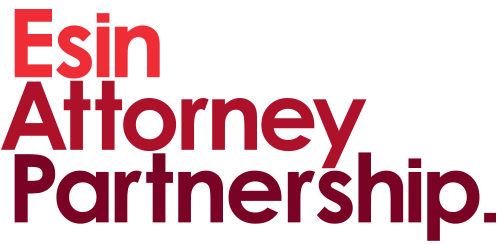Background
As stated in the General Rationale of the Draft Law on Autonomous and Fully Autonomous Vehicles (“Draft”), the reason for this Draft is that autonomous vehicles have already become part of daily life. The Draft aims to define autonomous and fully autonomous vehicles, determine the principles of their use and introduce additional measures to existing legislation concerning traffic. The Draft also envisages amendments to the Turkish Penal Code and the Road Traffic Law.
What changes do the draft law bring?
1. The Draft Law on Autonomous and Fully Autonomous Vehicles
The Draft on autonomous vehicles introduces broad obligations not only regarding licensing and testing processes but also covers use, maintenance, data recording, reporting of incidents and accidents, as well as liability regimes.
a. Definitions
- Autonomous vehicle: a motor vehicle manufactured to operate autonomously, not requiring continuous driver control but subject to occasional driver intervention
- Fully autonomous vehicle: a motor vehicle manufactured to operate autonomously without any driver control
- Safety operator: technical personnel responsible for remotely taking control of the vehicle in the event of malfunctions during the use of autonomous vehicles
- Authorized driver: the person required to complete training prepared by the Ministry of National Education and pass an exam to obtain an autonomous driving certificate (The driver must also receive approval from the competent authority.)
- Authorized autonomous vehicle organization (Turkish term: YOAK): the entity responsible for the management of authorized autonomous vehicles
- Competent authority: the Ministry of Interior Affairs
b. YOAK
Each authorized autonomous vehicle is expected to be managed by a YOAK, primarily consisting of vehicle manufacturers and software providers. These organizations will be responsible for ensuring that autonomous vehicles remain consistently suitable for autonomous driving tests. The Ministry of Industry and Technology will be responsible for authorizing and regulating YOAKs.
YOAKs’ obligations will include the following:
- Ensuring continuous safe operation of autonomous vehicles in accordance with obligations
- Regularly transmitting recorded data to the authorities and making the data available for inspection when required
- Carrying out software updates and other modifications aimed at improving the vehicle regularly and getting the authorities’ approval
c. Levels of Autonomy
The SAE J3016 standard developed by SAE International was used to determine the levels of autonomous vehicles. According to this standard, there are six levels starting from Level 0. The basic criterion in this classification is the vehicle’s ability to pass the “self-driving test.” Level 0 refers to vehicles with no automation, where the driver performs all driving tasks. For the draft to be applicable, the vehicle must have an autonomy level between 3 and 5. Level 3, the lower limit, is conditional automation. The vehicle can take over all driving tasks under certain conditions, but driver intervention is required in the event of a problem regarding the system. Level 5 refers to full automation, where there is no need for a human driver.
d. Authorization, Testing and Use
The testing or use of an autonomous or fully autonomous motor vehicle in a public area is expected to be subject to authorization by the competent authority (i.e., the Ministry of Interior). The application for authorization will be submitted to the Ministry of Interior. A judicial fine of 120 days for the driver or the YOAK official is expected to be imposed for violating this obligation. However, authorization will not be required if the use or testing of the autonomous motor vehicle does not involve the activation of the autonomous system. The conditions to be sought and the documents to be requested in the authorization application have not yet been definitively determined.
e. Maintenance Obligation
The authorized driver or YOAK will ensure that vehicles and their parts are always kept in good condition and that the system operates without causing damage during approved trials or private use. A fine of TRY 80,000 is expected to be imposed for the first violation of this obligation and TRY 200,000 for subsequent violations.
f. Data Recording
Every vehicle to be used in approved testing or approved private use is expected to be equipped with a data recorder capable of storing information in accordance with the relevant legislation. During use, the data recorder must always remain operational, whether or not the autonomous system is activated. Data collected in digital format must be stored for at least three years from the date of recording, even if the authorization period has expired. Any alteration, modification or tampering with information captured by the data recorder will result in an administrative fine of TRY 200,000. The first violation of other norms will result in a fine of TRY 40,000, and subsequent violations will result in a fine of TRY 80,000.
g. Obligation to Report Incidents and Accidents
The authorized driver or YOAK is required to report the following two situations within the time frame and manner requested by the competent authority: (i) any incident related to a malfunction of the autonomous system of an autonomous vehicle used for testing or private use; and (ii) any incident resulting in death, bodily injury or property damage arising from or related to the use of the autonomous vehicle. A fine of TRY 40,000 is expected to be imposed for the first violation of these obligations, and TRY 80,000 for subsequent violations.
h. Testing of Vehicles and Duty of Presentation
Upon written request by the competent authority, the authorized driver or YOAK is expected to be required to present the autonomous motor vehicle, the infrastructure technology used or any part of the equipment or device before the person, at the time and at the place specified by the competent authority. Furthermore, the competent authority may subject the autonomous motor vehicle, its technology or any of its parts to testing without having to perform the test itself. However, these decisions may only be made for three purposes: to assess the safety of the autonomous motor vehicle, to review the conditions of authorization and to determine whether there is any noncompliance with the Draft or the conditions of authorization. Despite a decision made for any of these purposes, an authorized driver or a YOAK that fails to fulfill the duty of submission is expected to be subject to an administrative fine of TRY 40,000 for the first violation and TRY 80,000 for subsequent violations.
i. Independent Incident Investigation Unit
The Draft envisages the establishment of an Independent Incident Investigation Unit, affiliated with the Ministry of Interior but working independently, to technically investigate incidents involving autonomous vehicles. Composed of experts from five different fields, this unit will conduct technical investigations, legal assessments, crime scene analysis, data analysis and medical assessments. Its duties include investigating the causes of accidents, preparing and submitting reports to the relevant authorities, developing preventive recommendations and informing the public. The General Law Enforcement Unit works in cooperation with this structure as the first unit to investigate the accident and collect evidence.
j. Responsibility
The Draft divides responsibility for autonomous vehicles between the user and the manufacturer. The user will be held liable for failing to intervene when necessary (in user-responsible mode), for being under the influence of alcohol or drugs even if the vehicle is in autonomous mode or for making unauthorized changes to the software. The manufacturer is liable for software or hardware errors, design and manufacturing defects contrary to safety standards, and misleading information or data manipulation. In some accidents, both the user and the manufacturer may be deemed to be at fault, and joint liability may arise.
2. Proposed Amendments to the Turkish Penal Code
The Draft Law on the Amendment of the Turkish Penal Code envisages the addition of a new article titled “Homicide Caused by Autonomous and Fully Autonomous Vehicles,” following Article 85 of the Turkish Penal Code titled “Negligent Homicide.” Accordingly, if autonomous and fully autonomous vehicles cause a person’s death by negligence, those who are at fault among the persons listed will be punished with a judicial fine from three to six months. These are the vehicle owner, the authorized driver, the YOAK and the public or private sector managers who produce the vehicle mechanics, develop the vehicle software, provide internet access by mediating the transmission of vehicle traffic data, produce security technologies for these vehicles, and are responsible for establishing and operating the traffic infrastructure. Furthermore, the aggravated forms of this penalty will be regulated similarly to Article 85 of the Turkish Penal Code, titled “Negligent Homicide.”
A new article titled “Negligent Injury Caused by Autonomous and Fully Autonomous Vehicles” will be added to the Turkish Penal Code, following Article 89 titled “Negligent Injury.” Accordingly, if autonomous and fully autonomous vehicles negligently cause pain to a person or impair their health or perceptive ability, those who are at fault among the persons listed above will be punished with a judicial fine from one to three months. The aggravated forms of this penalty will be regulated similarly to Article 89 of the Turkish Penal Code titled “Negligent Injury.”
3. Proposed Amendments to the Road Traffic Law
The Draft Law on the Amendments to the Road Traffic Law proposes expanding the scope of some obligations under the Road Traffic Law (“Law”) and adds autonomous and fully autonomous vehicles, operators of fully autonomous vehicles and authorized drivers of autonomous vehicles to the list of responsible parties. The expected changes to the provisions regarding obligations and responsible parties are as follows:
- Pursuant to Article 21 of the Law, operators of fully autonomous vehicles who fail to comply with the obligation to obtain a registration certificate and license plate will also be subject to administrative fines.
- Pursuant to Article 23 of the Law, operators of fully autonomous vehicles will be included in the scope of the obligation to keep the registration certificate and registration plate on the vehicle. It is stipulated that the operator of an autonomous and fully autonomous vehicle who attaches a registered or fake license plate to another vehicle shall be punished in accordance with Article 204 of the Turkish Penal Code.
- Pursuant to Article 26 of the Law, operators of fully autonomous vehicles who fail to comply with the obligations and prohibitions regarding traffic distinction signs and other signs that are mandatory for certain vehicles will also be fined, their licenses will be revoked for a certain period and the vehicles will be banned from traffic.
- Pursuant to Article 47 of the Law, fully autonomous vehicles that violate the obligation to obey traffic signs and rules will be banned from traffic for 30 days, and fully autonomous vehicles that violate these prohibitions three or more times in the same year will be referred for technical inspection. A similar sanction is provided for in Article 51 regarding speed limits.
- Pursuant to Article 58 of the Law, the obligation to stop on the right side of the road and to board and alight passengers on the right side will also bind the authorized driver in autonomous vehicles and the operator in fully autonomous vehicles.
- The authorized driver in the case of autonomous vehicles and the operator in the case of fully autonomous vehicles must comply with the obligation under Articles 59, 60, 61 and 62 of the Law, which prohibits stopping or parking on the carriageway and other specified places, except in mandatory cases.
- Pursuant to Article 67 of the Law, the obligation not to take actions that may cause danger to road users and make their movements difficult will also apply to autonomous and fully autonomous vehicles. If there is a failure to comply with this obligation, the authorized driver of the autonomous vehicle, the operator of the autonomous vehicle and the operator of the fully autonomous vehicle will be liable.
- Pursuant to Articles 72 and 73 of the Law, the responsibility of not engaging in behaviors that may disturb the peace and tranquility of the public shall also apply to the operators of autonomous and fully autonomous vehicles and authorized drivers of autonomous vehicles.
- Pursuant to Articles 77, 81 and 82 of the Law, there is an obligation to assist persons with disabilities while driving and those affected in the event of an accident. The authorized driver of the autonomous vehicle, the operator of the fully autonomous vehicle and the safety operator of the fully autonomous vehicle shall also comply with this obligation.
- Pursuant to Article 118 of the Law, penalty points will be given to the authorized driver of an autonomous vehicle in the event that the driver commits acts deemed criminal under the Law. According to the regulation, the penalized fully autonomous vehicle is banned from traffic, and the operating permits of autonomous and fully autonomous vehicles that cause a traffic accident resulting in death as the primary fault are revoked indefinitely.
Conclusion
The Draft introduces comprehensive obligations to ensure that autonomous vehicles can operate on the road safely and in compliance with the law. A clear framework of responsibilities has been established for both users and manufacturers, with detailed rules provided in areas such as data recording, maintenance and incident reporting. This represents a significant step forward for both traffic safety and legal certainty.






